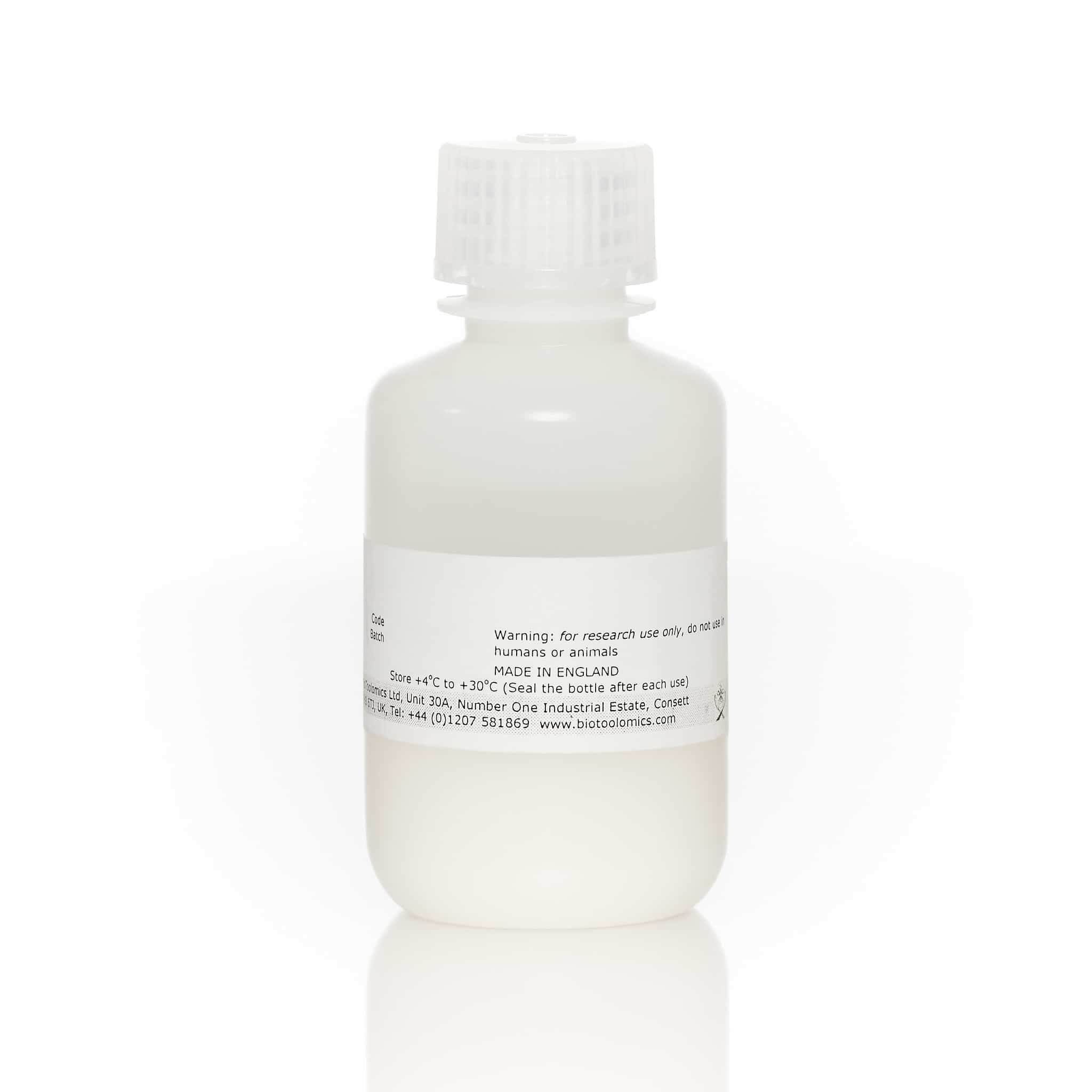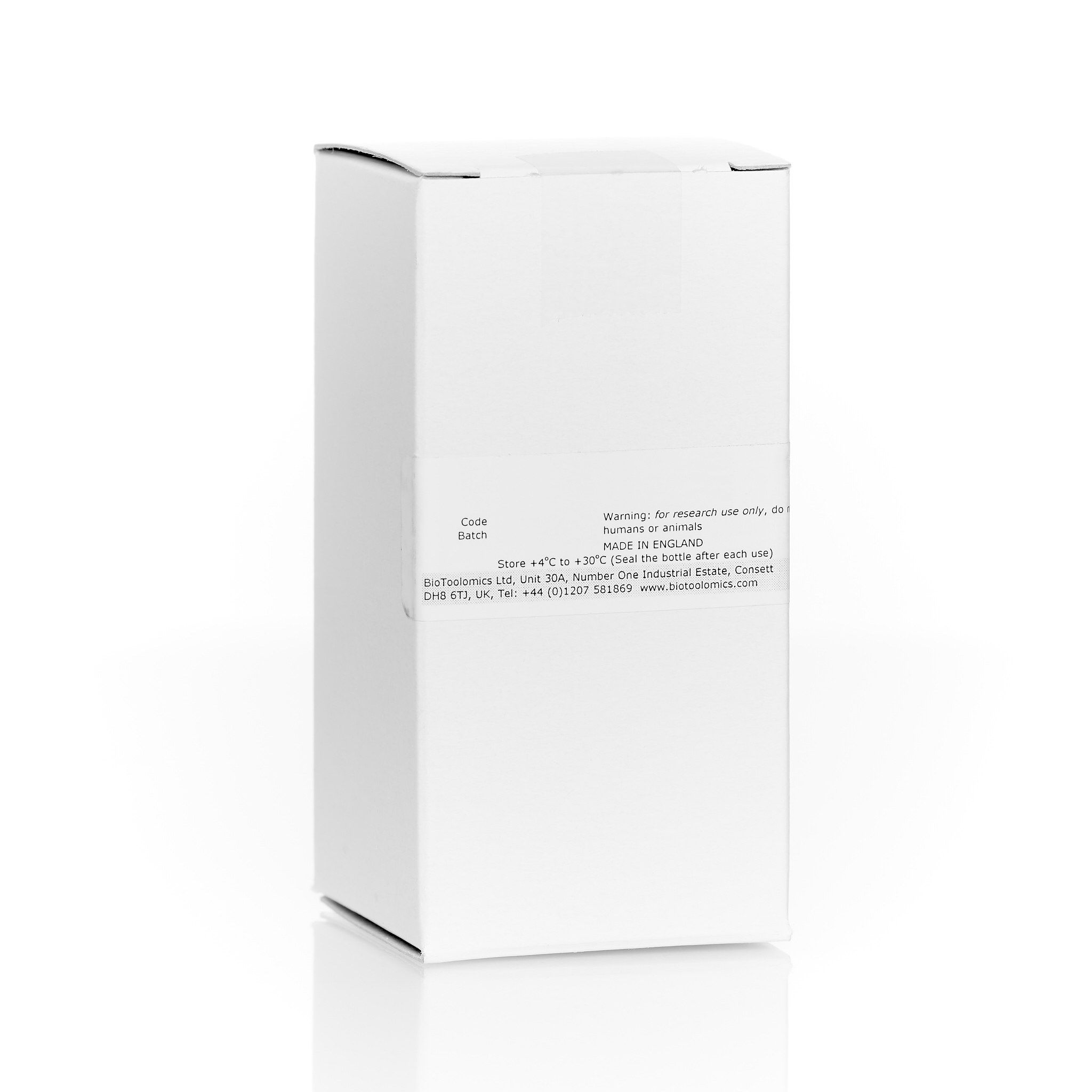Call for price
Ni SepFast HighRes has a particle size of 20 – 50 µm and is designed and fabricated for high performance chromatographic purification of proteins in packed columns, particularly in FPLC systems. The base matrix is made of heavily cross-linked polysaccharide. Its small spherical shaped particle and carefully controlled pore structure allows superior chromatographic resolution in a packed column operation. Also, its high mechanical strength permits liquid passing through the pressurised column at reasonable flow rates with low to medium pressure drop. All these translate into higher purification performance at shortened purification time.
Metal ions can be charged to the covalently attached chelating groups on the solid support. Leakage of metal ions is negligible.
Description
Ni SepFast HighRes has a particle size of 20 – 50 µm and is designed and fabricated for high performance chromatographic purification of proteins in packed columns, particularly in FPLC systems. The base matrix is made of heavily cross-linked polysaccharide. Its small spherical shaped particle and carefully controlled pore structure allows superior chromatographic resolution in a packed column operation. Also, its high mechanical strength permits liquid passing through the pressurised column at reasonable flow rates with low to medium pressure drop. All these translate into higher purification performance at shortened purification time.
Metal ions can be charged to the covalently attached chelating groups on the solid support. Leakage of metal ions is negligible.
Ni SepFast HighRes is highly stable and compatible to a wide range of chemicals commonly experienced in protein purification processes, which means that more flexible operations can be developed for the best performance.
Immobilised metal affinity chromatography (IMAC) has been widely employed as a powerful separation approach in the purification of a broad range of proteins and peptides. It is based on the specific interactions between certain transitional metal ions, mostly Cu2+, Ni2+, Zn2+ and Co2+ to the exposed amino acid surface chains containing histidine (or cysteine and tryptophane). The presence of several adjacent histidines such as (His)6-tag increases the affinity to immobilised metal ions. Increasingly, IMAC resins are employed for the purification of histidine-tagged recombinant proteins expressed in bacteria, yeast and mammalian cells. There are other applications of IMAC resins to purification of certain native non-tagged proteins as well, such as interferons, lectins, antibodies, serum and plasma proteins, peptides and peptide hormones.
Metal ions are immobilised to the carefully designed porous polysaccharide polymer supports such as agarose beads via covalently attached strong chelating groups. The much smaller particle size of IMAC SepFast HighRes allows fast mass transfer of protein molecules within the pores.
Additional information
| Weight | N/A |
|---|---|
| Dimensions | N/A |
| Class | |
| Volume | 10 ml, 25 ml, 100 ml, 1 litre |
| Particle size | |
| Matrix | Cross-linked 6% beaded agarose |
| Total ionic capacity | >15 µmol/ml |
| Binding capacity | >40 mg/ml |
| Pressure-flow property | 100 cm/hr is recommended |
| Operational pressure | Up to 3 bar |
| Chemical stability | Stable in 0.01M HCl, 0.1M NaOH and 0.2M acetic acid tested for one week, Stable in 0.1M HCl and 1% SDS tested for 30 mins, Stable in 0.5 M NaOH and 30% acetic acid tested for overnight |
| pH stability | 2 – 14 (short term), 3 – 12 (long term) |
| Storage | 20% ethanol |

